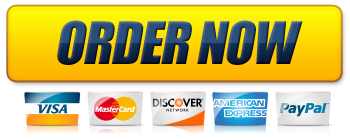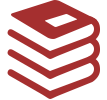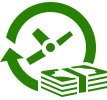Organizational Analysis
In order to deliver competent service, social work practitioners must understand the organizational mission, goals, structure, culture, and behavior of the agencies in which they work. The purpose of this assignment is to describe and critically analyze the structure and culture of your field placement agency. Assuming the role of a “consultant” to your field agency, you will assess your agency’s strengths/assets and limitations and offer ideas for improvement.
The organizational analysis assignment is divided into two parts, and you will examine agency documents, observe agency processes, and interview/have conversations with staff throughout the semester to complete the Agency Assessment Tool (which is a fillable word document that can be found in Blackboard under the Assignments Tab). You will use the information gathered for the assessment tool to complete Parts I and II of the assignment. The tool should be submitted as an appendix with each part of this assignment.
Part I: Assessment Tool Section I and Macro Project Description
Part I of the organizational analysis assignment requires completing Section I of the Agency Assessment Tool (History/Structure/Staffing; Mission/Vision/Planning; Services). This tool will help orient you to your field agency. This part of the assignment dovetails with your Field Learning Agreement due in late September. While completing Section I of the assessment tool, you will work collaboratively with your field instructor to identify substantive macro-focused activities that could be undertaken over the academic year
This could include a single project or set of activities, either of which should integrate with the student’s learning goals. By the due date specified in your syllabus, you will submit Section I of your Assessment Tool and a brief (about 2-page) description of the macro project you have identified. The proposed macro project should answer the following questions:
- What population is being served by the organization, and what are their needs?
- What specific activities are entailed in your project, and how does the overall purpose of the project reflect the mission and goals of the agency and/or the department/program in which you are placed?
- What staff will you need to collaborate with to accomplish the goals of the project?
- What product(s)/output(s) will result? In other words, what does “success” for this project look like, and how will you assess the impact of the project on the intended target system (i.e., clients, staff, organizational network, legislature)?
- What is the connection between the proposed project/activities and the learning goals and expected competencies articulated in the learning contract?
- What is the expected timeline for completion of activities and/or key milestones for the project?
Part II: Assessment Tool Parts I and II and SWOT Analysis
Part II of the organizational analysis assignment requires you to complete Section II of the Agency Assessment Tool (and make any necessary revisions to Section I). Using the information gained, you will complete a SWOT analysis (identifying key strengths, weaknesses, opportunities, and threats) for your organization and propose a set of feasible action steps for organizational improvement.
The final 5-6 page paper should include the completed Agency Assessment Tool as an appendix and follow the outline below (NOTE: the Agency Assessment Tool does not count in the paper length. Also, the Macro Project Progress section is OPTIONAL. If you do not include the Macro Project Progress section in your paper, aim for 5 pages. If you do choose to include the Macro Project Progress section, aim for no more than 6 pages.):
- Introduction
- Provide a brief introduction to the agency, summarizing its history, mission, staffing, and services. This should be 1 page maximum.
- Strengths:
- Describe your assessment of the organization’s key strengths. Refer to and use specific data/examples you gathered for the Agency Assessment Tool to support your critique of the agency’s core strengths.
- Strengths might include: strong leadership and planning, fundraising or staff leadership development, etc.
- Weaknesses
- Describe your assessment of the key weaknesses and areas for organizational improvement. Refer to the Agency Assessment Tool and use specific data/examples you gathered to support your critique of the agency’s core weaknesses.
- Weaknesses might include: minimal performance measurement systems, limited Board engagement, or room for moving the agency toward being an anti-racist multicultural organization.
- Opportunities and Threats
- Identify and describe key aspects of the agency’s external environment (e.g., funding sources, public policies, inter-organizational relationships) that have already or have potential to significantly impact the agency’s everyday operations.
- What should the organization’s leadership and staff keep in mind as they think about new client needs, strategic planning and programming, fundraising goals, new technology needs, etc?
- Plan of Action
- Propose a few core goals/action steps the agency can take that build on the agency’s strengths/opportunities and address challenges/threats faced by the agency.
- The plan of action should include specific recommendations and concrete steps that the earlier sections of your analysis inform and support.
- Macro Project Progress (OPTIONAL – if completed in full, you can receive up to 3 points extra credit on your Organizational Analysis Part II grade; For example, with a complete Macro Project Progress section, an overall Part II grade of 88% would become a 91%.)
- Provide a brief update on your macro project: activities completed to date, your success in achieving the learning goals related to this project, and how your macro project contributes to strengthening the organization.
Evaluation Criteria: Parts I and II of the assignment will be evaluated based on the following criteria:
- How thoroughly and critically you address questions for each section;
- The extent to which you integrate information gathered and reported in the Agency Assessment Tool as evidence to support your critique;
- The extent to which you effectively integrate and critically apply the theories/models/concepts from the course readings and/or other peer-reviewed sources from the literature (a minimum of 3 sources should be cited) throughout your analysis; and
- The clarity and organization of writing (use appropriate spelling, sentence structure, and grammar; meet required page limit; and appropriately use APA style.)











 Jermaine Byrant
Jermaine Byrant Nicole Johnson
Nicole Johnson









